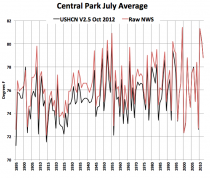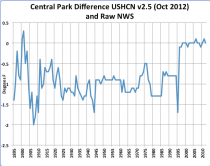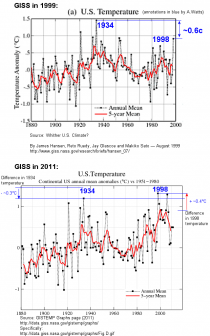Our "Disinterested, Neutral, Expert" Regulators In Action
/The theory under which we have dozens of Federal and state regulatory agencies overseeing our economy is that they are disinterested, neutral experts who can set fair and just rules and oversee a transparent and clean marketplace. Another theory is that they are venal and self-interested human beings like everyone else, having as their primary goals personal advancement and self-aggrandizement and caring little or not at all about the public interest.
So let's consider an example or two. Back on July 1 in a post entitled Annals of Government Self-Promotion, Big Bank Edition, I considered the large number of huge recent settlements between government regulators (state and Federal) and big banks, and suggested that it would make sense to look at them as a "very sick game of government aggrandizement" whereby the government passes big profits to the banks by keeping interest rates low, and then "any Federal agency that wants its name in the paper can pick one of the big banks and go out and get at least a few hundred million" by purporting to enforce some incomprehensibly complex regulation.
Well, the tide continues. Last week J.P. Morgan put out its latest earnings release for the second quarter of 2013, showing net income of $6.5 billion for the quarter -- a very large number, clearly blown up by the continuing if perhaps slightly diminished efforts of the Fed to keep the banks' cost of funds at or near zero. And literally days later comes a big front page article in the Wall Street Journal that yet a new Federal agency, this time the Federal Energy Regulatory Commission (FERC) is about to hit up JPM for a few hundred mil. And yes, there on page 2 in the print edition, there is a photo of FERC Chairman Jon Wellinghoff, formerly obscure energy regulator now launched into greatness by his realization that he just needed to go after the right designated villain for some big money.
What is the alleged wrong? The WSJ article says "market manipulation," but a July 22 article here at Reuters goes into more detail. Seems that there are basically two electricity markets in California, one for the next day and the other immediate. JPM figured out that there were pricing discrepancies between the two markets such that it could bid one price in one and a different price in the other, and almost always make money:
JPMorgan's trading strategy, the ISO said, was to submit bids [in the day-ahead market] with high minimum load costs but exceptionally low - sometimes negative - power prices, making them attractive enough for the grid to schedule the plant to run the next day. But in the following day's real-time market, JPMorgan would change its prices, submitting very high bids that discouraged the grid from "dispatching," or running, the plants. That would leave the unit running below its minimum level or not at all, triggering a "minimum load" payment to cover those costs.
Is it just me, or that basically just smart trading? I thought the whole idea of trading for a financial player was to figure out a strategy to exploit pricing discrepancies between different markets or between similar but not identical products so that you could make money no matter which way the market went. Go long on the stock and short on the option, or long on the convertible debt and short on the stock, or something like that.
According to the WSJ, the question of whether to settle has divided executives at the bank. The head of commodities trading was taking the position that "these employees and the bank did nothing wrong." Maybe not, but that's not how this game is played. These Federal regulators must not be embarrassed, and must get their names in the paper, and hey, we just earned $6.5 billion as a back door gift to enable the game to go forward. So the word is that a settlement of around $400 - 500 million is in the works.
I wonder which agency will get the next one?
Meanwhile, Fortune Magazine in the June 28 edition carries a big story on the rebirth of Fannie and Freddie. Remember them? They are the giant "mortgage twins" who securitized and/or guaranteed most of the housing mortgage market, leading to the housing bubble and the financial crisis. Oh, and they "stuck the taxpayers with a $189 billion bailout bill after their collapse in 2008." Did you think that after that debacle they were being wound down or phased out? Guess again.
It seems that in order to conduct "quantitative easing" I, II, III or whatever we are now up to, the Fed needs to buy some $85 billion of bonds per month. Where to get them? Well, they have decided that Fan and Fred debt qualifies. Thus, buy as much as you can, as fast as you can, with the infinite checkbook. You probably have already guessed where this is going. First, Fan and Fred get far more money for housing finance with far lower cost of funds than any other player can even approach. So nobody else can compete with them in buying up and securitizing mortgages. So the Fan/Fred market share in buying and/or guaranteeing mortgages soars, now back to about 80%.
But isn't this exactly what got us into the last mess? As far as I can tell, yes. All orchestrated by the disinterested, neutral experts at the Fed, who have just multiplied their own balance sheet by a factor of about 5 in the last few years. Thankfully, no self interest involved there.
In other news from the Fed, today's WSJ, page 1, reports that none other than Larry Summers is one of the leading candidates to replace Ben Bernanke as head of the Fed. Larry Summers, former President of Harvard, is the guy who's so smart that he knows that more spending causes less debt and less spending causes more debt. At the Manhattan Contrarian, we have dubbed him the man among all men with "more credentials and less actual competence." But he does know to say the most ridiculous of things that the President wants said. Make him head of the Fed! He'll be a good "disinterested, neutral expert."
UPDATE, July 26: I was thinking more about this last night and I suddenly realized that the alleged wrong of JPM in the California electricity matter is that its trading somehow marginally increased the cost of electricity in California to consumers. Wait a minute! California has an entire "cap and trade" carbon restriction scheme, the whole idea of which is to artificially increase the cost of electricity to consumers. Does FERC not understand that that's how to save the planet? JPM, I have figured out your defense!


